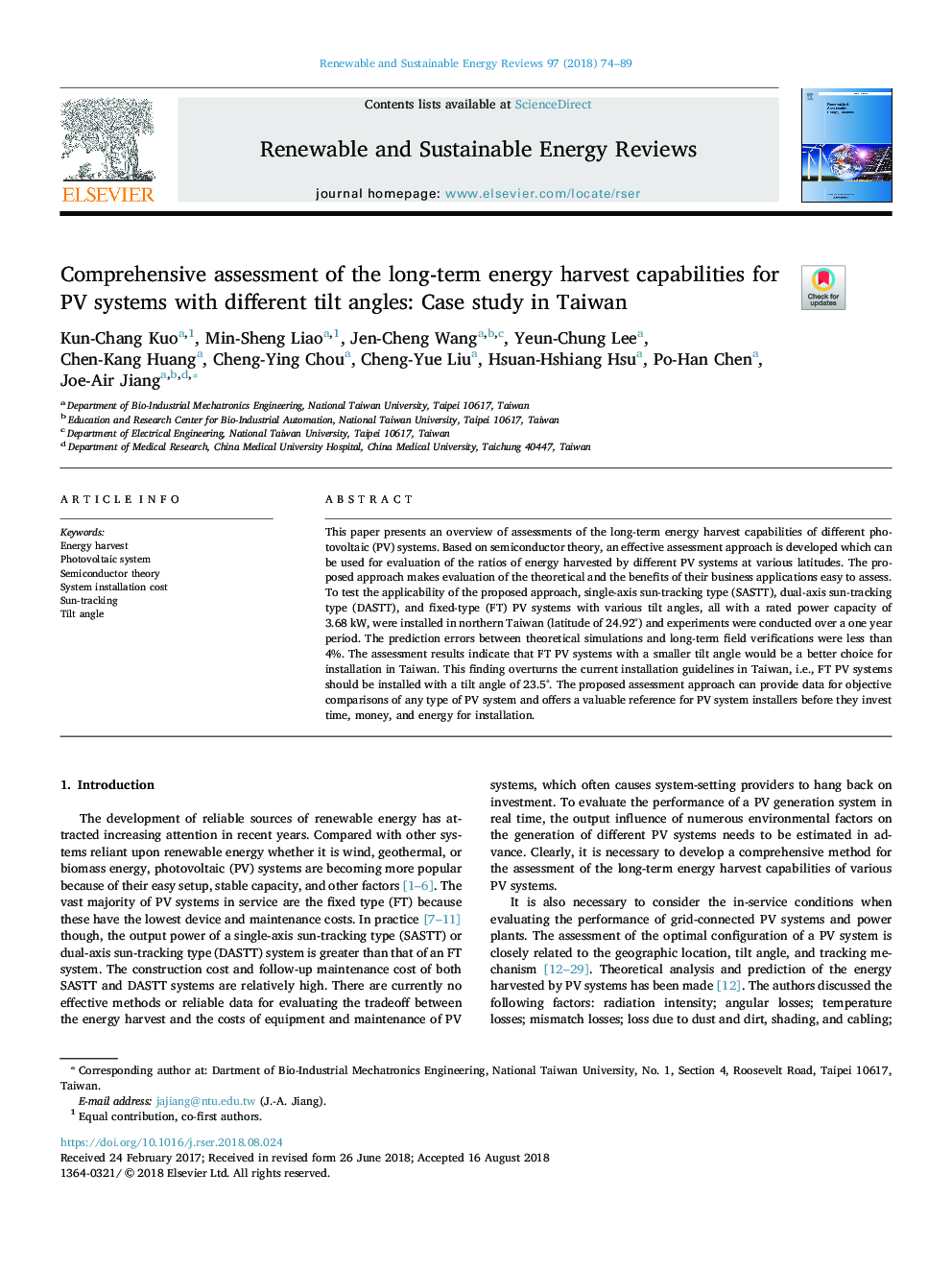| Article ID | Journal | Published Year | Pages | File Type |
|---|---|---|---|---|
| 10136441 | Renewable and Sustainable Energy Reviews | 2018 | 16 Pages |
Abstract
This paper presents an overview of assessments of the long-term energy harvest capabilities of different photovoltaic (PV) systems. Based on semiconductor theory, an effective assessment approach is developed which can be used for evaluation of the ratios of energy harvested by different PV systems at various latitudes. The proposed approach makes evaluation of the theoretical and the benefits of their business applications easy to assess. To test the applicability of the proposed approach, single-axis sun-tracking type (SASTT), dual-axis sun-tracking type (DASTT), and fixed-type (FT) PV systems with various tilt angles, all with a rated power capacity of 3.68â¯kW, were installed in northern Taiwan (latitude of 24.92°) and experiments were conducted over a one year period. The prediction errors between theoretical simulations and long-term field verifications were less than 4%. The assessment results indicate that FT PV systems with a smaller tilt angle would be a better choice for installation in Taiwan. This finding overturns the current installation guidelines in Taiwan, i.e., FT PV systems should be installed with a tilt angle of 23.5°. The proposed assessment approach can provide data for objective comparisons of any type of PV system and offers a valuable reference for PV system installers before they invest time, money, and energy for installation.
Related Topics
Physical Sciences and Engineering
Energy
Renewable Energy, Sustainability and the Environment
Authors
Kun-Chang Kuo, Min-Sheng Liao, Jen-Cheng Wang, Yeun-Chung Lee, Chen-Kang Huang, Cheng-Ying Chou, Cheng-Yue Liu, Hsuan-Hshiang Hsu, Po-Han Chen, Joe-Air Jiang,
